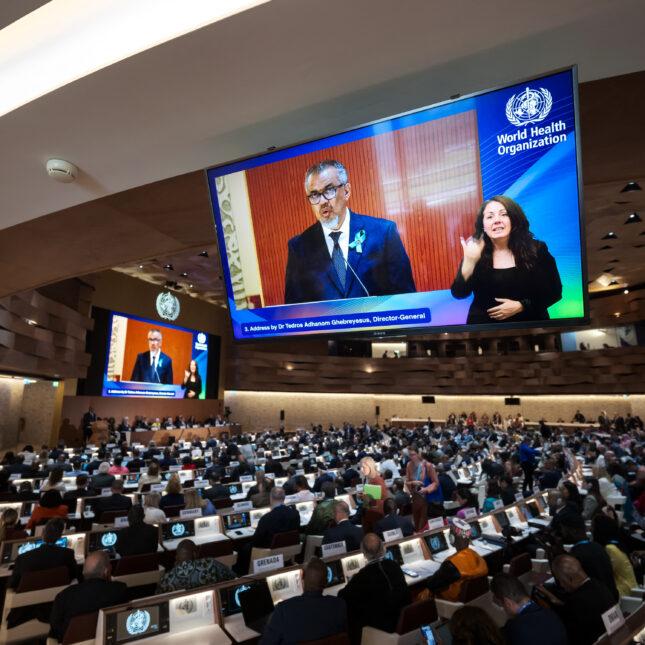In a historic move aimed at bolstering global health security, world leaders have officially ratified the first-ever pandemic treaty, a pivotal agreement designed to enhance cooperation and preparedness for future health crises. As nations grapple with the lasting effects of the COVID-19 pandemic, this treaty represents a collective acknowledgment of the need for a coordinated response to emerging infectious diseases. However, as questions arise about its implementation and effectiveness, experts and policymakers are left to ponder whether this landmark agreement will truly transform how the world responds to pandemics or whether it will remain a symbolic gesture in the face of ongoing challenges. In this article, we explore the treaty’s key provisions, the motivations behind its creation, and the potential impact it may have on global health governance in the years to come.
The Significance of the Pandemic Treaty in Global Health Governance
The newly established pandemic treaty represents a pivotal moment in global health governance, aiming to enhance coordination and cooperation among nations during health crises. This revolutionary agreement seeks to address the systemic gaps exposed by recent pandemics, particularly highlighting the inequities in vaccine distribution and healthcare access. By establishing a structured framework for international collaboration, the treaty intends to bolster preparedness and response mechanisms through:
- Harmonized protocols: Standardized guidelines for data sharing and public health practices.
- Equitable resource allocation: Ensuring that low- and middle-income countries receive necessary support during outbreaks.
- Enhanced surveillance: Improved tracking of emerging infectious diseases on a global scale.
Moreover, the treaty calls for accountability measures that hold countries responsible for their commitments, fostering a sense of shared responsibility among nations. This newfound commitment to collective action is crucial in transforming the way the world confronts pandemics. An essential aspect of the treaty is the focus on research and development investment, which could lead to:
| Focus Area | Potential Outcome |
|---|---|
| Vaccine development | Faster innovation and deployment of vaccines |
| Diagnostic tools | Improved accuracy and speed in testing |
| Public health initiatives | Enhanced capacity for prevention and outbreak management |
Assessing the Key Provisions of the International Agreement
The recent adoption of the international pandemic treaty signals a significant step toward global cohesion in public health response. Among the key provisions are binding commitments from nations to report outbreaks within a specified timeframe, a move aimed at enhancing transparency. Additionally, the treaty includes frameworks for sharing critical data and resources, which could bridge the gaps that hinder timely interventions during health emergencies. Countries will also be required to collaborate on vaccine distribution, ensuring equitable access particularly in low-income areas, highlighting a critical focus on global fairness.
Furthermore, the agreement outlines mechanisms for financial support to bolster countries’ capabilities to prepare for and respond to pandemics. Implementing this could involve establishing a dedicated fund that nations contribute to, ensuring financial resources are readily available when crises arise. The treaty also emphasizes strengthening local health systems, recognizing that robust local infrastructure is essential for effective pandemic management. As these provisions take effect, the true test will be whether they lead to a more unified response to potential future pandemics, signaling a shift in the global health paradigm.
Strategies for Effective Implementation and Future Preparedness
The newly enacted pandemic treaty presents a crucial opportunity for nations to work together towards robust global health strategies. To effectively implement this groundbreaking agreement, governments and health organizations must prioritize several key steps. Collaboration and coordination among countries are essential; establishing clear communication channels can facilitate timely information sharing about emerging health threats. Additionally, capacity building should be a focus, where resources are directed towards enhancing local healthcare systems, training healthcare workers, and investing in research and development. A unified response not only strengthens safety nets but also ensures that resources are optimally allocated in times of crisis.
Future preparedness will hinge upon continuous evaluation and adaptation of the treaty’s frameworks. Regular assessments should be conducted to gauge the effectiveness of implemented strategies and to make necessary adjustments in response to evolving epidemiological data. Furthermore, fostering a culture of public engagement and education is vital in promoting awareness and compliance within communities. Countries might consider developing transparent systems of accountability and support, ensuring that all stakeholders are invested in the public health landscape. The following table outlines potential action points for countries to enhance their pandemic preparedness:
| Action Point | Description |
|---|---|
| Resource Allocation | Prioritize funding for health infrastructures and emergency preparedness. |
| International Collaboration | Forge partnerships for knowledge sharing and joint research initiatives. |
| Public Awareness Campaigns | Invest in educating the public about prevention and response strategies. |
| Regular Drills | Simulate pandemic situations to test response plans and readiness. |
Wrapping Up
As the world’s leaders finalize and implement the first-ever pandemic treaty, the question remains: will it be a game changer in global health governance, or merely a symbolic gesture? With mounting evidence of the need for enhanced international cooperation in the face of future health crises, the treaty aims to address the systemic shortcomings exposed by the COVID-19 pandemic. Advocates emphasize the importance of equitable access to vaccines, sharing of data, and robust response mechanisms, while skeptics caution that without concrete enforcement and commitment, the treaty may fall short of its potential. As nations navigate the path forward, the true impact of this historic agreement will become clearer in the months and years to come. The world watches closely, hoping this unprecedented collaboration will pave the way for a more resilient global community prepared to confront the challenges of the next pandemic.
